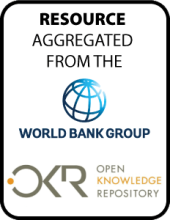Land Library Search
Through our robust search engine, you can search for any item of the over 73,000 highly curated resources in the Land Library.
If you would like to find an overview of what is possible, feel free to peruse the Search Guide.
/ library resources
Showing items 1 through 9 of 47.The agricultural and food production sector plays a key role in fighting poverty and food insecurity in Moldova, but is facing critical challenges to modernize and integrate into the international market.
Uganda’s progress in reducing poverty from 1993 to 2006 is a remarkable story of success that has been well told. The narrative of Uganda’s continued, albeit it slightly slower, progress in reducing poverty since 2006 is less familiar.
Improving the productivity of
smallholder farms in Sub-Saharan Africa offers the best
chance to reduce poverty among this generation of rural
poor, by building on the limited resources farming
In absence of deposit insurance,
underdeveloped financial systems can exhibit a coordination
failure between banks, unable to commit on safe asset
holding, and depositors, anticipating low deposit repayment
Weather risk and incomplete insurance
markets are significant contributors to poverty for rural
households in developing countries. Weather index insurance
has emerged as a possible tool for overcoming these
Mali is a vast, land-locked country in
West Africa with a population of approximately 14.9 million,
and a GDP per capita of USD480. The economy is largely
rural, with over two-thirds of the population living off
This issue includes the following
headings: Changes in Poverty and Female-Headed Households in
Africa; Growth and Capital Inflows in Africa; Growth and
Capital Inflows in Africa; Vulnerability to Climate Change
To explain persistent gender gaps in
market outcomes, a lab experimental literature explores
whether women and men have innate differences in ability (or
attitudes or preferences), and a separate field-based
There is no doubt that the poorest
people are already and will continue to be most severely
impacted by climatic changes, including shifting trends as
well as more frequent and severe extreme events. Yet, new



